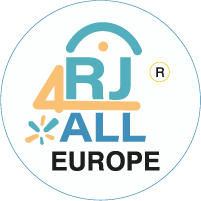What is restorative justice?
At RJ4All Europe, everything we do internally (e.g. how we run our organisation) or externally (e.g. our projects and services) are based on our lived understanding of restorative justice. The truth is that there is a plethora of definitions for restorative justice. While these may be helpful in developing a critical approach to restorative justice, we use what both our own original research, but also lived experience of working with harming and harmed parties has taught us.
We see restorative justice as an ethos that guides our relationships. The term is infused with a series of philosophical reflections some of which have been articulated in the published literature by our Founder and Director Professor Theo Gavrielides. It is also embodied in the form of practices and encounters. But above all, restorative justice is a way of being. It is about you and me (ubuntu).
Restorative Justice is an "ethos"
This definition was the result of around 250 interviews and questionnaires that were completed between 2001 – 2005 with practitioners, researchers and policy makers from around the world.
The research pointed out that none of the practitioners called restorative justice a “practice”, while none of the researchers called it a “theory”! There was an overwhelming consensus, however, that “ethos” was an all encompassing word that could probably capture the richness and fluidity of restorative justice (taken from Restorative Justice Theory and Practice: Addressing the Discrepancy, 2nd Edition). Also available in Portuguese Teoria e Prática da Justiça Restaurativa: abordando a discrepância
Restorative justice is relational, personal and tough
Close your eyes and try to visualise restorative justice. What do you see?

